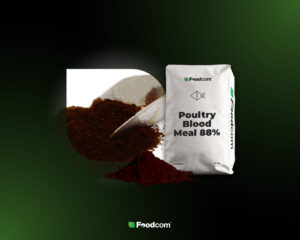- Studies show that the majority of agricultural crops for feed are contaminated with mycotoxins.
- The problem particularly affects South Asia and North America.
- A study in the USA showed the presence of mycotoxins in 100% of samples tested and highlighted the impact of contamination on the nutritional composition of forage.
- It is necessary to increase the frequency of grain testing, adjust feed composition and implement strategies to manage mycotoxin contamination to protect animal health.
Increased mycotoxin contamination of corn in America and the impact on forage
Contamination of maize with mycotoxins is a serious problem affecting animal feed production. This was fully demonstrated in a report covering nine months of this year (January to September) and more than 17,500 samples from 91 countries around the world. The problem was found to be mainly in North and Central America, South Asia, China and Taiwan. Contamination was also found to be higher than the previous year as a result of wet weather in 2024. In contrast, a recent study by toxicology and mycotoxicology experts showed that US maize for poultry feed is heavily contaminated with mycotoxins. The study was conducted by scientists from the U.S. National Poultry Research Center and other poultry research organisations. They examined 328 corn samples from 10 states in the US Southeast.
Every sample tested contained at least one mycotoxin, fumonisin, and many also contained other of the four most common mycotoxins. Although the levels of mycotoxins were mostly below the regulatory threshold, the cumulative effect of contamination with different mycotoxins was found to pose a health risk to poultry, as well as affecting the nutritional quality of feed. For example, aflatoxin contamination affects lower fat content, deoxynivalenol affects protein content, and fumonisin and zearalenone affect starch content. It is also worth noting that mycotoxin levels can increase during feed storage.
How to deal with mycotoxin contamination?
Although crop yields have increased significantly in recent years, around 25% of the world’s cereal harvest is unusable due to mycotoxin contamination. Of the crops used for feed, maize is the most susceptible to fungal colonisation – other cereals such as wheat, barley, oats and soybeans do not suffer as much contamination. However, it is estimated that 60-80% of agricultural products become contaminated with mycotoxins and 61% contain more than one toxin. The scientists presenting the latest study recommend testing products that go into feed production and considering the combined effect of contamination with different substances on feed composition and healthiness. Re-testing of feed ingredients just prior to production, on the other hand, would provide an opportunity to anticipate changes in the nutritional composition of the feed and adjust it. Above all, however, it is necessary to develop strategies to effectively manage mycotoxin contamination.
We encourage you to read this article, which contains interesting information: Choline Chloride and its Use in Poultry Feed
![Latest reports illuminate the problem of mycotoxin contamination of feed [World News] Latest reports illuminate the problem of mycotoxin contamination of feed [World News]](https://foodcom.pl/wp-content/uploads/2023/09/Foodcom_World_News_Feed-1520x760.jpg)






